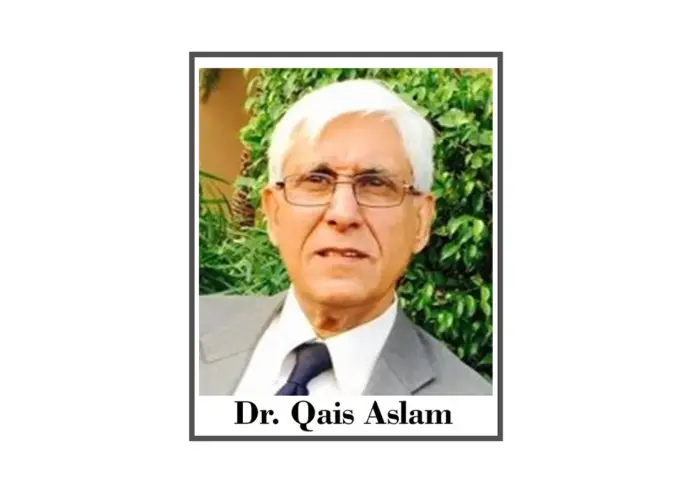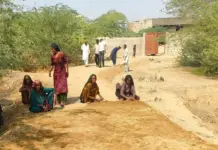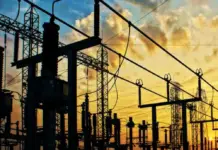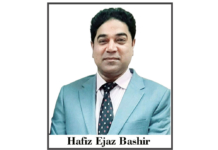Inflation is the other name of a general price rise in an economy. Demand Pull inflation is when too much money with the buyers is trying to buy too few goods in the market. This is also called money inflation and does not significantly impact the richer sections of the demand side (consumers) but is killing for the fixed income groups, pensioners and the poorer sections of the consumers (buyers). On the other hand, demand-pull inflation is an incentive for the supply side to increase profits and to produce more.
cost push inflation is when the input cost of production increases, pushing the prices of finished goods and services to rise. Cost-push inflation is a disincentive for both the demand side, because it reduces their buying power and the producers (suppliers) because it also reduces their profit margins and therefore their incentive to produce decreases. It is also called core inflation. “Core inflation is the change in the costs of goods and services, but it does not include those from the food and energy sectors. This measure of inflation excludes these items because their prices are much more volatile.”
The most hurtful aspect of inflation is the rise in prices of food and energy that usually hit the poor and the vulnerable the most and diminishes both the incentive to buy as well as the incentive to sell, therefore bringing the GDP growth rates down.
Hyperinflation is a “term to describe rapid, excessive, and out-of-control general price increases in an economy. While inflation measures the pace of rising prices for goods and services, hyperinflation is rapidly rising inflation, typically measuring more than 50% per month.” Stagflation is when there is both unemployment (or the lack of capacity of a person or household to earn an income) due to stagnation of the economy and high inflation (the rapid decrease in buying power due to rise in prices).
According to State Bank of Pakistan’s Report the country achieved a GDP growth rate of 6% in fiscal year 2021-2022. In January 2023 Pakistan’s GDP Growth Rate was 2% and is envisaged to decrease below 2% by the end of fiscal year 2022-2023.
The unemployment rate of the country in 2020 was less than 4.5%, in 2021 was 4.35% and by the end of 2022 it reached 6.2% and it is estimated that between 10 million to 12 million people in Pakistan are unemployed.
In 2021 Pakistan’s inflation rate was 9.5%. In 2022 inflation rate of the country in 2022 stood at 13.4% and according to the State Bank report, in March 2023 the inflation of Pakistan is 31.5%, with core inflation at 17.1% in urban areas and 21.5% in rural areas (source: https://www.sbp.org.pk/m_policy/2023/MPS-Mar-2023-Eng.pdf).
The Pakistan Bureau of Statistics in its report of January 2023 states that with base year 2015-2016, the average inflation rate in January 2023 was 27.55%. The inflation rate of food and beverages was 34.58%; of non-perishable food items was almost 30%; of perishable food items was 5%; of clothes and footwear was 8.6%; of Housing, water, electricity, gas, and other fuels was 23.6%; of health was 2.8%; of transport was 6%; education was 3.8%; of restaurants and hotels was 7%. The urban food inflation increase as “Increased: Onions (468.54%), Chicken (83.27%), Wheat (78.39%), Rice (65.24%), Wheat Flour (61.25%), Gram Whole (50.47%), Pulse Moong (46%), Pulse Gram (44.53%), Besan (43.25%), Mustard Oil (42.28%), Pulse Mash (37.1%), Fresh Fruits (35.33%), Cooking Oil (31.46%), Milk Fresh (29.27%), Vegetable Ghee (28.49%), Tomatoes (22.44%), Fish (22.28%), Pulse Masoor (22.07%), Meat (20.01%), Fresh Vegetables (8.43%), Potatoes (6.18%) and Sugar (0.83%). The non-food inflation increase as : NON-FOOD Increased: Stationery (47.37%), Transport Services (29.97%), Motor Vehicle Accessories (29.26%), Motor Vehicles (28.04%), Marriage Hall Charges (19.93%), Household Textiles (14.55%), Construction Wage Rates (14.24%), Education (10.4%), House Rent (5.43%), Water Supply (4.92%), Newspapers (4.21%), Electricity Charges (0.69%) and Communication Services (0.52%).” (Source: https://www.pbs.gov.pk/sites/default/files/press_releases/2023/CPI_Press_Release_January_2023.pdf).
According to Trading Economies, the Pakistan Bureau of statistics in February 2023 reported that “Pakistan’s consumer price inflation jumped to 31.5% in February of 2023, the highest rate since June of 1974, following a sharp depreciation in the rupee and as the government announced a rise in energy prices and taxes to meet the International Monetary Fund’s loan conditions. At the same time, the consequences of last year’s devastating floods have accumulated economic difficulties. Cost increased further in all components: transport (50.5% vs 39.1% in January), housing & utilities (13.4% vs 7.8%), food & non-alcoholic beverages (45.1% vs 42.9%), alcoholic beverages & tobacco (49.2% vs 36.3%), furnishing & household equipment maintenance (34% vs 30%), recreation & culture (48.1 percent vs 44.1 percent), restaurants & hotels (34.5 percent vs 30.1 percent) and clothing and footwear (17% vs 16.8%). On a monthly basis, consumer prices accelerated to 4.3% in February, the highest in four months, from a 2.9% hike in the previous month.” (Source: https://tradingeconomics.com/pakistan/inflation-cpi).
By end of March 2023 the Holy Month of Ramzan started and all prices in the country skyrocketed. It is interesting to note that in the market economies prices of all goods decrease through sales seasonally and especially in Christmas time. This year there are Ramzan sales in the Christian and Muslim countries, of the Gulf, but in Pakistan hoarders and market players have increased the prices of food items and fruit substantially. The government of Pakistan has also increased sales tax on many items to 25% in order to collect an additional Rs. 70 billion which is costing the average consumer Rs. 120 billion through inefficiencies at different tiers of the market.
As far as cost of production is concerned, land prices in Pakistan increased substantially over the years. The cost of technology, raw materials and machines increased due to their imports when the rupee-dollar parity was in favor of the dollar that rose to Rs.285 on the inter-bank exchange and to more than Rs. 300 in the open market making it difficult for importers to pay for costly imported inputs. Many productive units in the country have closed in January-March 2023 rendering unemployment of those that have been downsized. The policy interest rates were increased to 200 points or at 20% and it is envisaged that they will be further increased to 22% in the near future, increasing the cost of borrowing by the private sector. The argument is that the increase in policy rate would control inflation, but when the policy rate was 7% to 9.75%, the inflation in the country was relatively low and at 20% the inflation has increased substantially. It should be known that the inflation is cost-push to which high interest rates would contribute in two ways – one, would make it expansive for the businesses to borrow and two, would contribute to increase in prices of finished goods and services, therefore the contractionary policy would bring down GDP growth and investment levels.
Simply speaking, the GDP of any country is the circular flow of incomes and expenditures between the firms and the households in money terms, and a circular flow of factors of production and goods and services between the households and the firms as a real economy. Therefore, the welfare aspect of the economy is when GDP growth rates are more than the population growth rates. This is not the case, because the population growth rate is almost 3% while the GDP growth rate is 2%, when it should be at least 6%. With high policy rates (to control demand-pull inflation) are 20% contributing to high inflation, with indirect taxes high at 25% contributing to inflation, with energy costs increasing substantially and the rupee-dollar parity deteriorating substantially and the phenomena of corruption among government functionaries at different tiers of governance, and other inefficiencies effecting adversely on free market mechanisms, with serious political instability in the country.
The high inflation rates are not only bringing down the GDP growth rate that has affected adversely the productive capacity of the economy and the employability of the private sector, but also contributes to deterioration of the buying power of the poor and the people of the lower strata in Pakistan. The poor are in crisis, the middle classes are in crisis, the producers and investors are in crisis. There is no substantial long-term economic policy that can give respite to investors and consumers alike in these days of political upheavals. A further decrease in GDP growth rate would usher in a state of economic depression that might not be controllable with ad hock policies measures.
In short, Pakistan needs a robust growth rate that can produce a spectrum of goods and services and energy resources from home and enable cost of doing business to decrease so that investors can invest in productive resources, increase employment levels. Inflation should come down to permissible levels that can be an incentive both for the demand side as well as for the supply side. Policy interest rates must be in the single digits, so that the cost of borrowing should decrease. All this can only be done when the government is a facilitator to economic uplift rather than a player that squeezes the economy through taxes and interest rates. Both the fiscal policy as well as monetary policy of the current government is contractionary in an economy that needs robust growth. These polices need to be poised against each other, rather than move in the same direction to solve the issues of unemployment and inflation in the domestic economy and issues of trade imbalance (deficit) and adverse exchange rate in favor of the dollar in the external economy.







